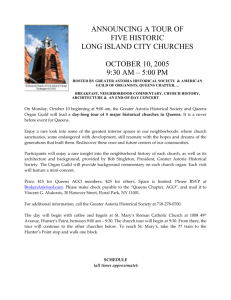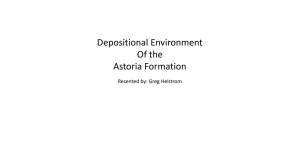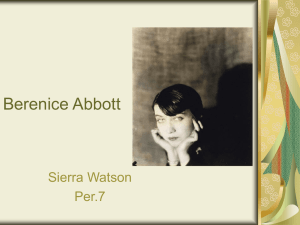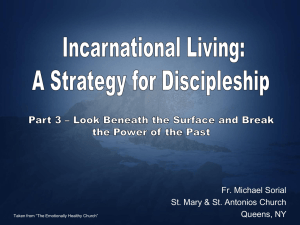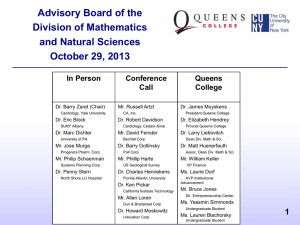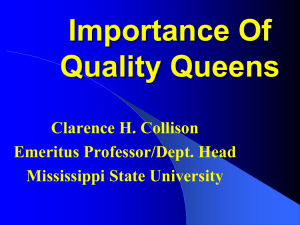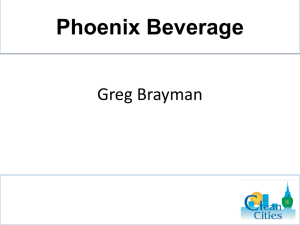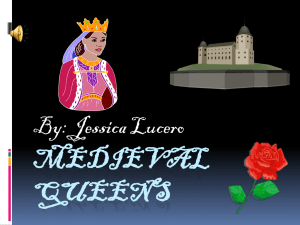Document
advertisement
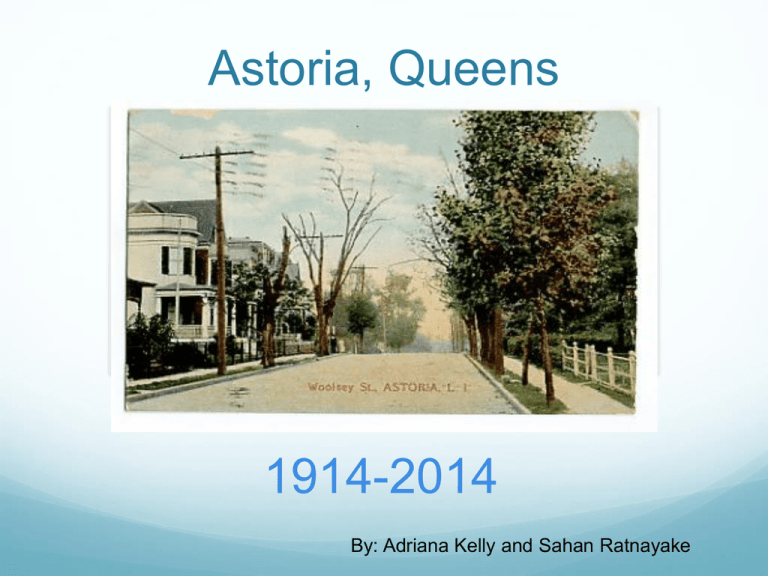
Astoria, Queens 1914-2014 By: Adriana Kelly and Sahan Ratnayake Location & History Queens, New York Bordered by East River, Long Island City, Sunnyside, and Woodside Orignally known as Hallett’s Cove after William Hallett Renamed to Astoria after Jacob Astor, one of the first multi millionaires in New York. Incorporated into Long Island City in 1870 Demographic Breakdown Demographics In Astoria’s early history, settlers were Dutch and German. Later came Irish in late 1800s to early 1900s. They were of lower class Post World War II saw a large influx of Italians and Jews. 1960s saw the immigration of Greeks Neighborhoods populations are made of Dominicans, Indians, Ecuadorians, Koreans, Chinese, Filipino, Romanian The low education levels in the area are representative of the income in the area, which is mainly from small businesses Economy 1800 Astoria was composed of farmland Incorporated into LIC in 1870, then later incorporated into New York City in 1898 Astoria became more industrial in later years 1899 Queens had 400 factories, producing $35 million in goods, compared to 1914 Queens, which had over 1,000 factories, making $225 in products. One such company was American Ever Ready, manufacturing batteries, lamps, flashlights Economy in 1914 The New York State Barge Canal was being completed Queens Chamber of Commerce had the BCTC build terminals in many locations in Queens, including Halletts Cove. Increased profit lead to construction of better apartments with increased amenities Hot water, lights, refrigerators Prices varied from $15 for 3 rooms to $25 for 5 rooms. Homes were located at Steinway and Washington Avenues. New York Barge Canal Present Economy Asotria’s unused industrial sites are being revived and its waterfront is being redeveloped This will bring in more housing units, supermarkets, retail stores, restaurants, and schools Astoria has hundreds of small businesses, employing an average of four people Queen’s main employment establishments are construction, retail trade, healthcare services, and food services Economy of Queens Queens Economy Transportation New York Connecting Railroad The Hell Gate Bridge - Crosses between Astoria and Wards Island, Manhattan Triborough Bridge – Connects Manhattan, Queens, and Bronx via Randalls and Wards Islands E, M, R, N, Q, F trains Marine Air Terminal at LaGuardia Airport – used for shuttle service between New York and Boston Ninety-Second Street Ferry Queensboro Bridge Astoria Line street car : 1910-1939 Transportation Transportation Corruption in Queens The years leading up to 1914 were wrought with corruption Scandals followed three of Queen’s Borough Presidents These scandals involved attempts to defraud the municipal government Members of the Democratic Party Joseph Bermel, Lawrence Gresser, Maurice E. Connolly Joseph Bermel Borough President of Queens 1906 – 1908 Served as Commissioner of Public Works Involved in Kissena Park Scandal Fled to Europe, ultimately dying in Carlsbad, Czechoslovakia in 1921 Lawrence Gresser Commissioner of Public Works under Joseph Bermel Elected to Borough President of Queens in 1909 Resigned six months later, based on accusation of incompetency and the abuse of the office. Removed from office by N.Y. Governor John Dix in September 27, 1911. Succeeded by Maurice E. Connolly Maurice E. Connolly Borough President of Queens (1911-1928) Member of Democratic Party Resigned in 1928. Investigated for involvement in a sewer graft scandal. Found guilty of defrauding municipal government. Sentenced to one year and $500 fine. John Purroy Mitchel 95th mayor of New York City (1914 -1917) Second-youngest mayor in the City. Member of the Fusion Party Staunchly Anti-Tammany As a lawyer, he investigated city incompetence, inefficiency, and waste. Introduced widespread reform, especially the Police Department Martin H. Glynn 40th Governor of New York ( October 1913 – December 1914) First Irish American Roman Catholic head of government. Member of Democratic Party Active member in Progressive movement, and Irish American Affairs Committed suicide in 1924. Kaufman Astoria Studios Located in Astoria, Queens Part of the Paramount Studios Complex Built in 1920 by Famous Players-Lasky During the 1920’s, many short subjects were filmed, most notable being The Cocoanuts and Animal Crackers Used by U.S Army Signal Corps in 1942 to make Army training films Designated a national historic district in 1978. Kaufman Astoria Studios Astoria Park Located on West Shore of Queens, from South of Triborough Bridge to north of Hell Gate Bridge City of New York obtained 56 acres of this land in October 1913. At this time, the location was called William J. Gaynor Park after the mayor Park was renamed Astoria Park in December 1913. Park was expanded twice over the years: in 1937, and later in 1969 Park was renovated in 1980s St. Demetrious One of 11 Greek Orthodox churches Probably one of the largest Orthodox churces outside of Greece The Socrates Sculpture Park Outdoor exhibition space for sculptures. Located on intersection of Broadway and Vernon Boulevard
